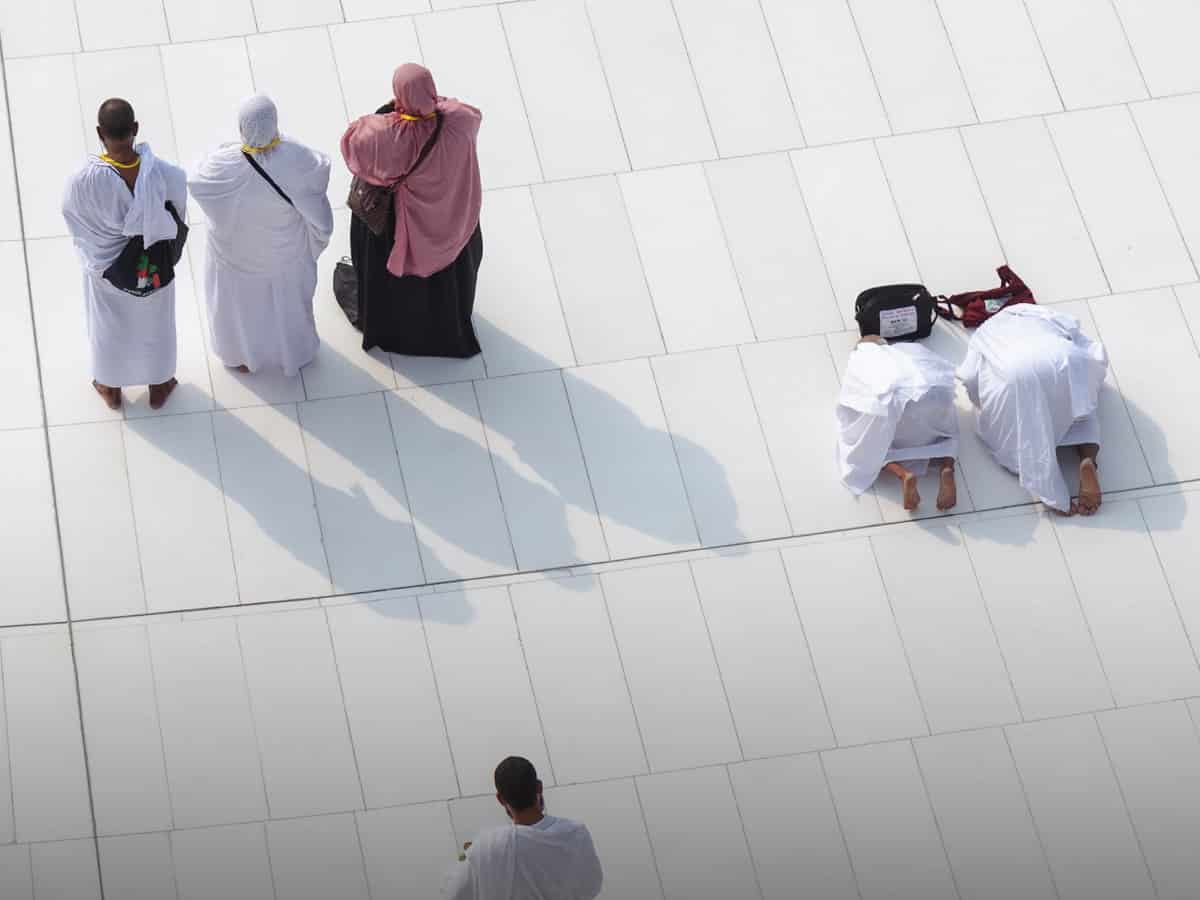
With just a few days left for the annual Haj to begin, Makkah is teeming with pilgrims. More than two million pilgrims from over 160 countries have poured in the holiest of Islamic sites to perform Haj this season. A unique phenomenon that dazzles the world each year, Haj is here again. For many it is a dream, a time for repentance and time to seek spiritual renewal. In the next couple of days pilgrims will be retracing the steps of Prophet Muhammad who undertook the pilgrimage more than 14 centuries ago.
What is Haj all about? It is not just going through the paces – the tawaf (circumambulation), sa’ee (briskly walking between Safa-Marwa hillocks) and drinking from the fountain of Zam-Zam. It’s not even ‘Rami Jamar’ (symbolic stoning of the devil) or the standing of Arafat. Of course these are the core acts of Haj. But there is more to Haj than meets the eye.
Haj is an inward journey to the Ka’ba of the heart and soul. It is returning to Allah, the source of everything. Haj provides a connect with all the prophets right from Prophet Adam to the last messenger, Prophet Muhammad , as one visits the holy places and redo their acts. Interestingly, all acts of Haj revolve around Prophet Ibrahim, the zealous advocate of monotheism, his son, Ismail and wife, Hajira. Their acts of total submission to the will of Allah are immortalised and made a part of Haj. These acts are a forceful reminder of their unwavering faith in Allah and tawheed (monotheism). Pilgrims are expected to be equally firm and resolute in the face of adversities, especially when their faith is at stake.
Haj is an act of intense love and devotion. When such a journey is undertaken problems do arise and they have to be taken into stride. As the name suggests, Haj involves a lot of mashaqqat (effort). The entire journey is fraught with trials and tribulations. This is why pilgrims are told to first seek ease and then acceptance of their worship while making the intention of Haj, Umrah and tawaf.
That rigour is part of Haj is clear from the fact that in spite of the modern day comforts and smartphones, cases of missing pilgrims are dime a dozen. One may be a millionaire back home and living in the lap of luxury but in the sandy planes of Arafat and Muzdalifah nothing works. These hassles are not even a thousandth part of what Prophet Ibrahim and his family went through. Perhaps Allah wants the Hajis to get a taste of what his Khaleel (friend) experienced. But what one sees year after year is pilgrims complaining about each and everything the moment they land in Saudi Arabia. They are found fighting for space and primacy as a matter of right. Patience runs thin especially in Mina, the tent city, where too many pilgrims are crammed into tight pavilions. The five days of Haj, beginning 8th Zill Hijja (the last month of the Islamic calendar), are really an acid test.
But those who endure adversity with fortitude enjoy great reward from Allah. What stands one in good stead here is the spirit of sacrifice and fear of the Lord. Giving preference to the needs of others over oneself is the key to Allah’s pleasure. Learning to be tolerant, patient and forgiving, sticking to piety, guarding one’s gaze, abstaining from carnal thoughts and at the same time being sociable with fellow pilgrims is expected of pilgrims.
The rites of Haj are few in number, simple in execution but rich in meaning. A Haj performed with an awakened heart and with due adherence to sunnat (prophetic traditions) ought to bring in revolutionary changes and prove a turning point in life. But such transformation is seldom seen in the life of most pilgrims. There is no noticeable, not even subtle change. Most of them are the same as they were before the Haj.
This, of course, calls for understanding the significance and meaning behind various rituals of Haj. Pilgrims take great pains to memorise lengthy duas (supplications) but they don’t pay the same attention to understand the spirit behind Haj, the inner core. Haj is an obligation enjoined by Allah once in a lifetime on every financially sound and physically fit person. Shouldn’t one take due care in its performance?
Performing Haj is one thing and remaining a Haji quite another. This is the biggest challenge pilgrims face after returning home.
Offering salat (namaz) on time, reciting the Quran and protecting one’s gaze from non-mahram (persons with whom marriage is permissible) is quite easy in the sanctified environs of Makkah and Madinah. But doing the same back home is a task. Is it possible to remain on a spiritual high all the time? Definitely not. All of mankind sins but the best among the sinners are those who repent and return to Allah. What is important is to repent whenever there is a slip up.
An important way of remaining on the right course is not to stop pelting the Satan. This is not just a rite of Haj but an act to be done till the last breath. Whenever the devil goads you to err, stone him with the same force you used in Mina.



